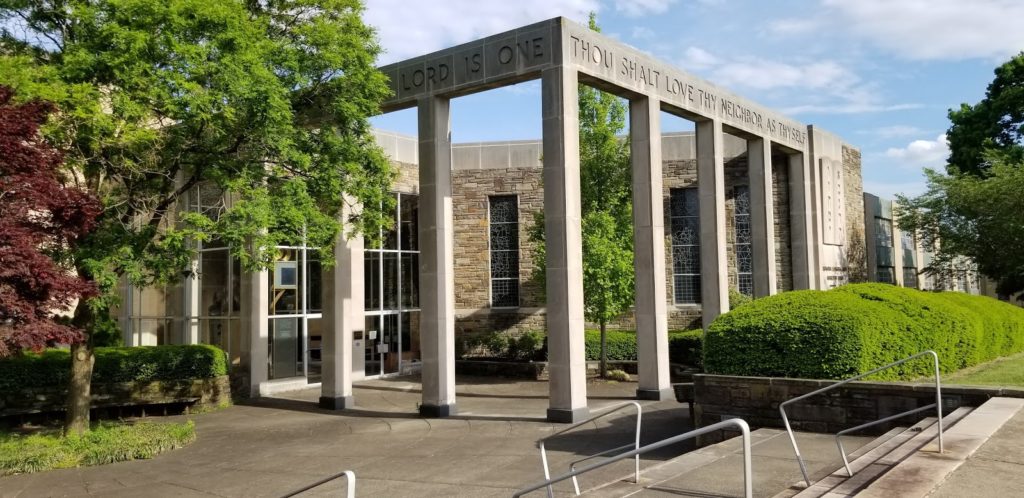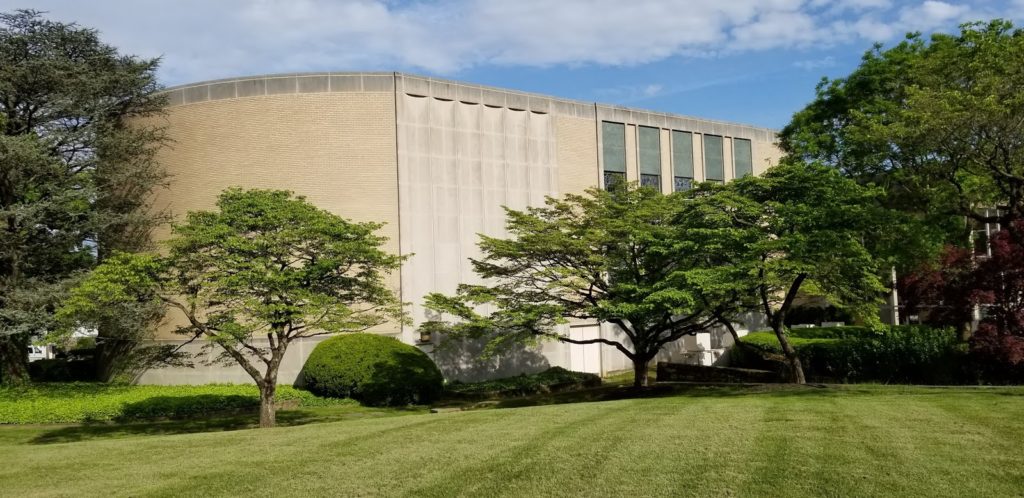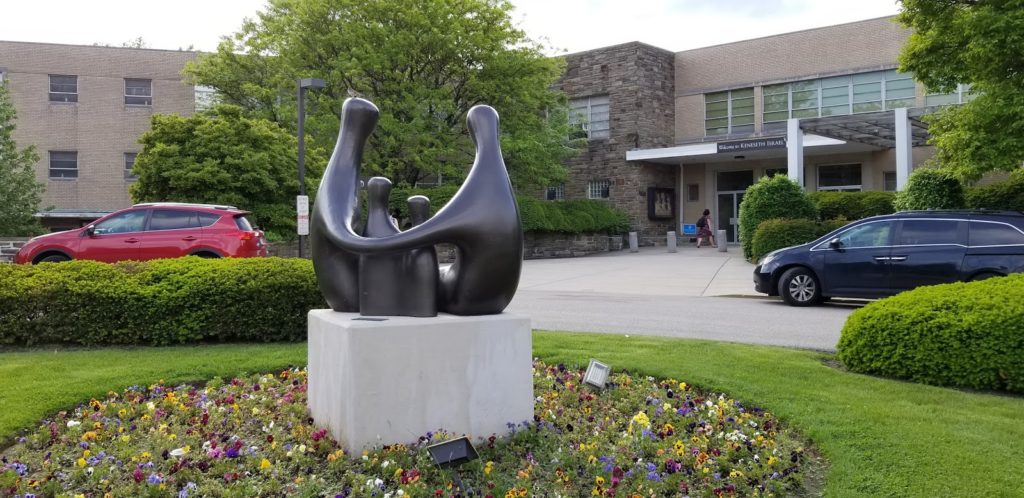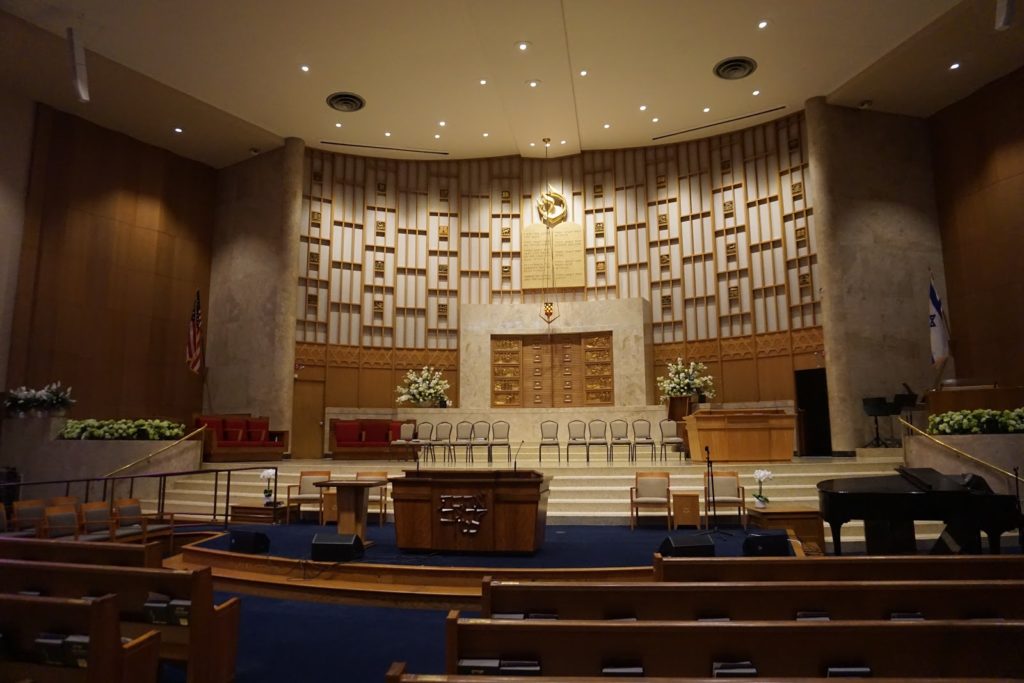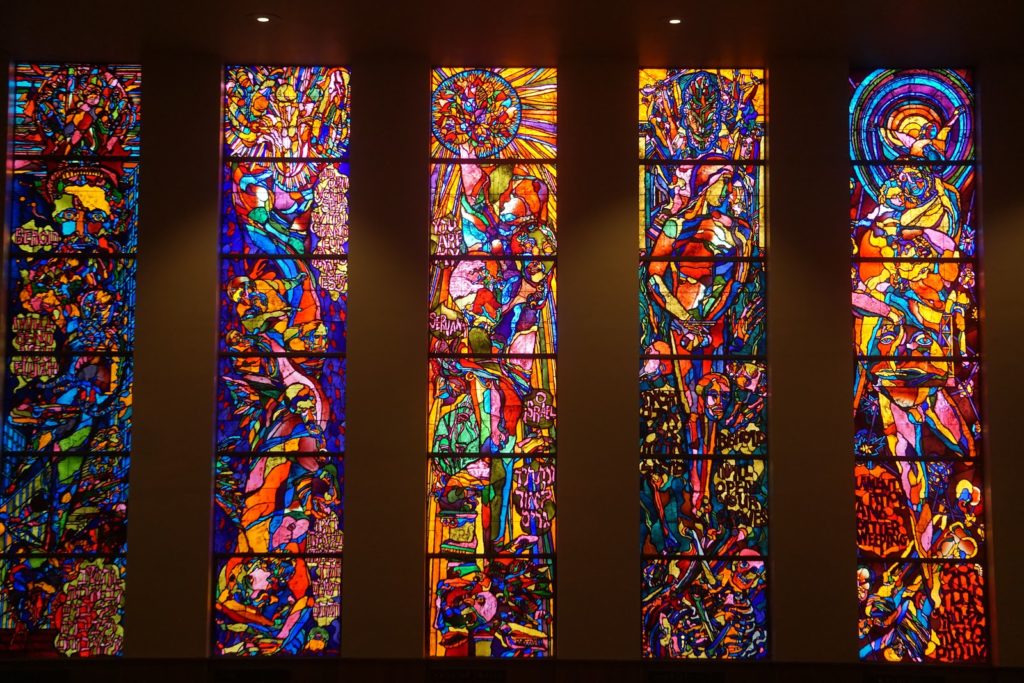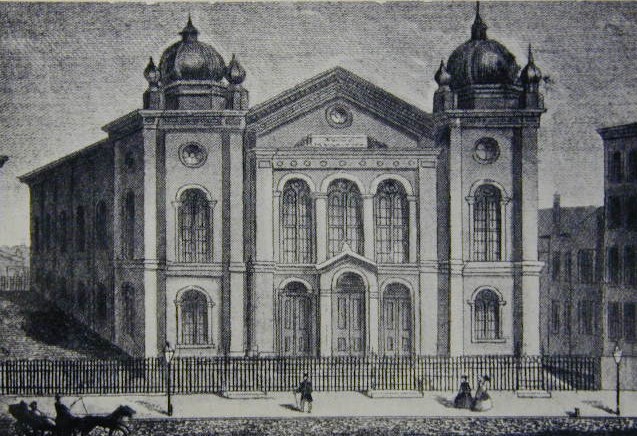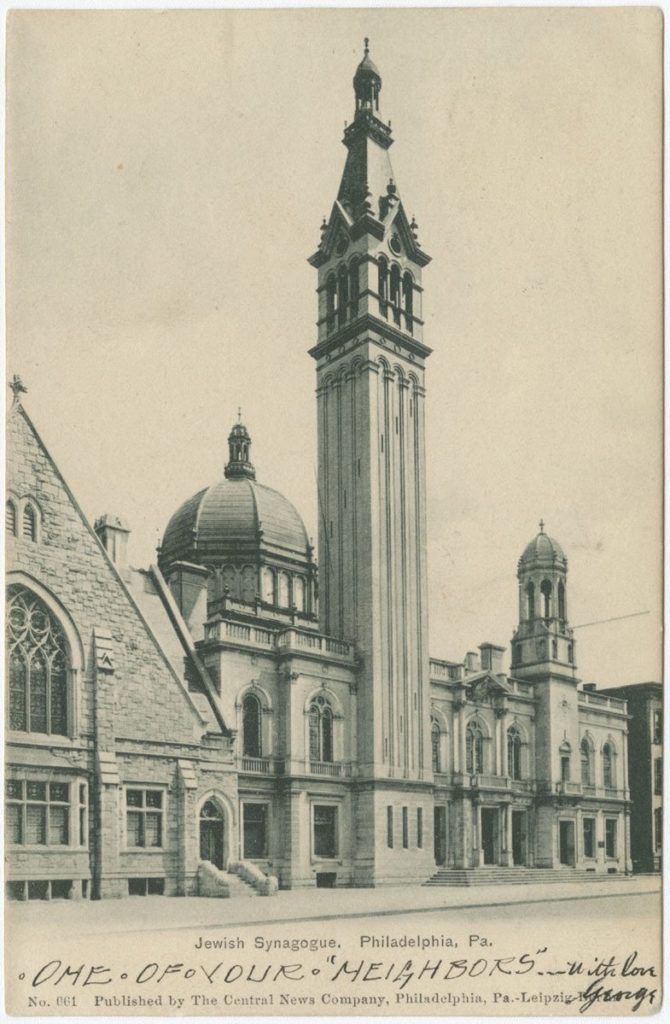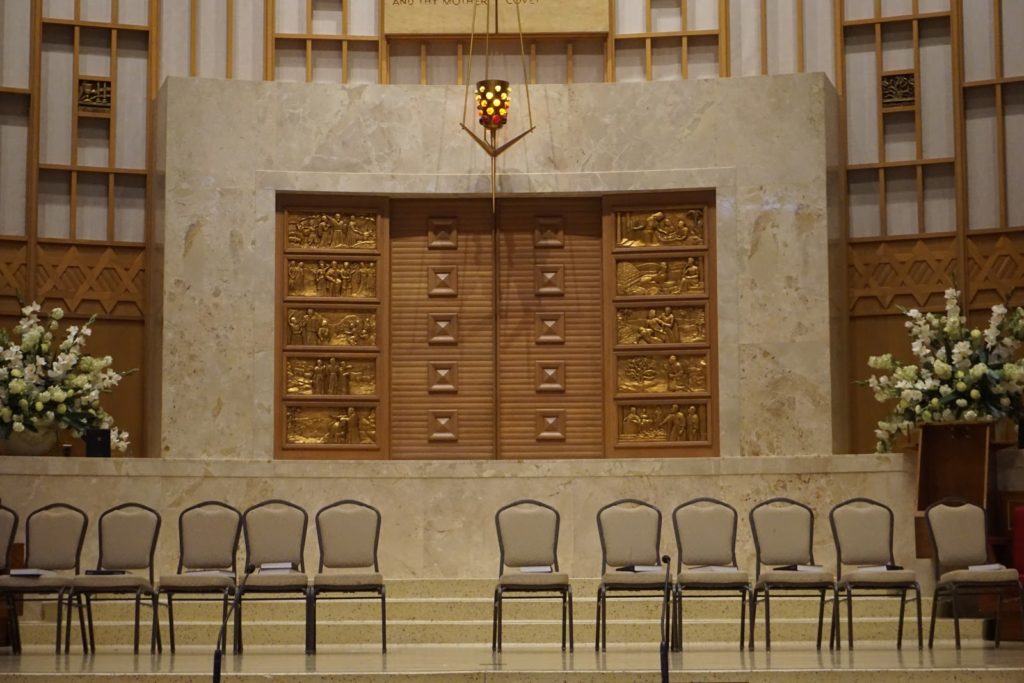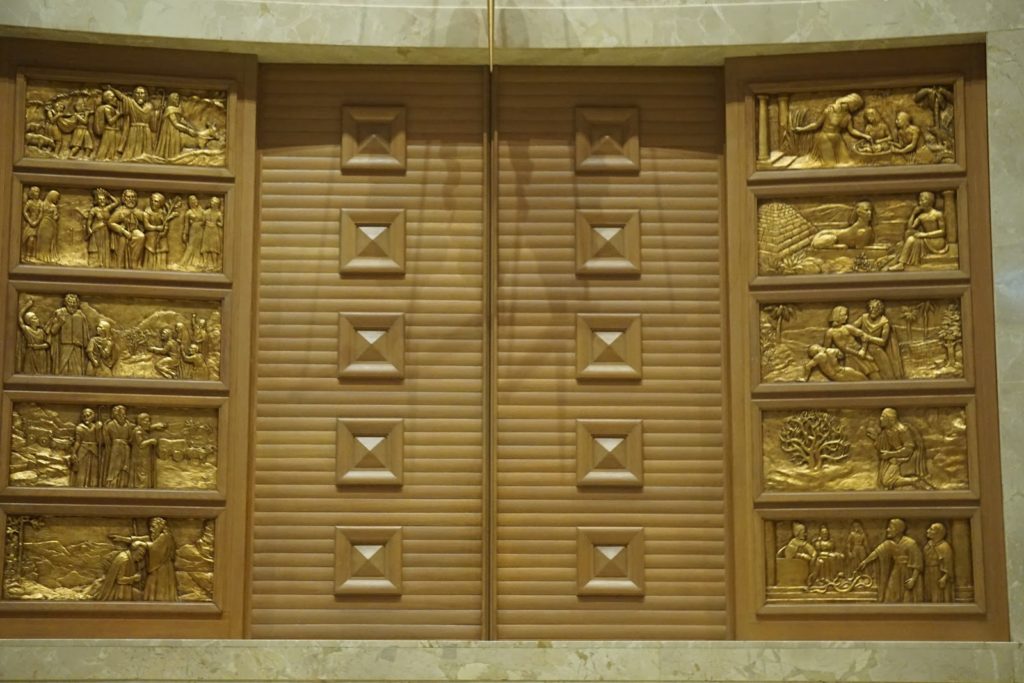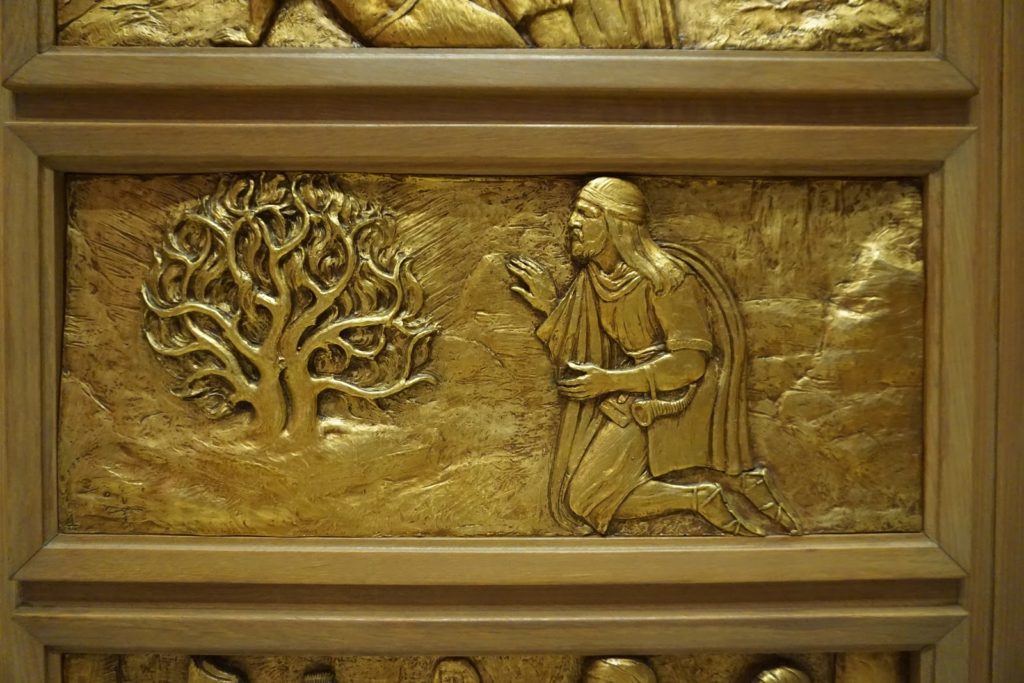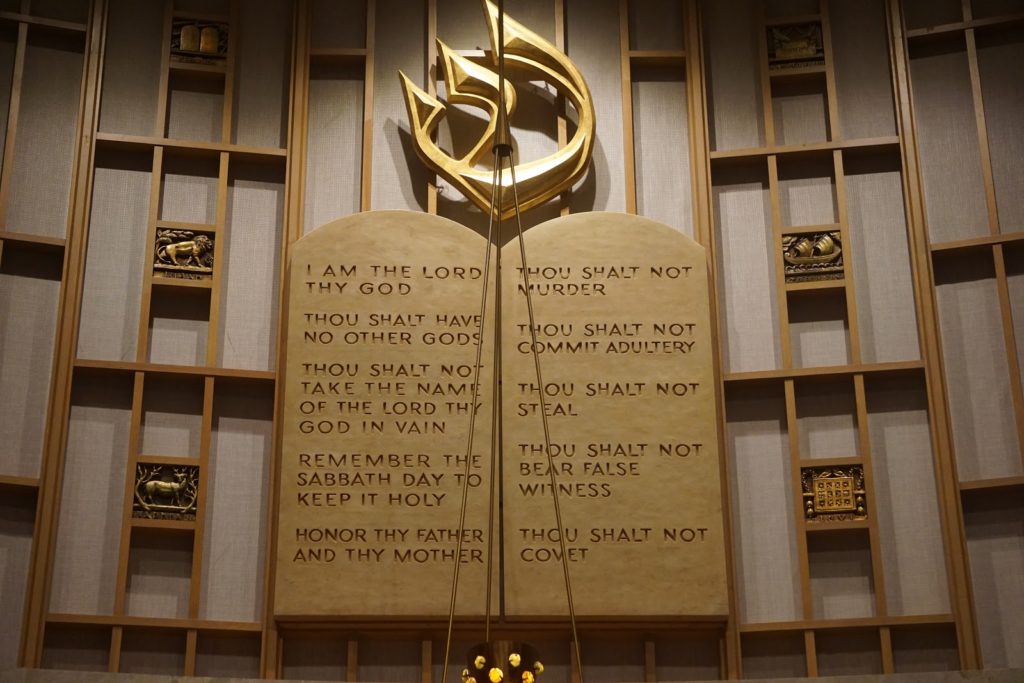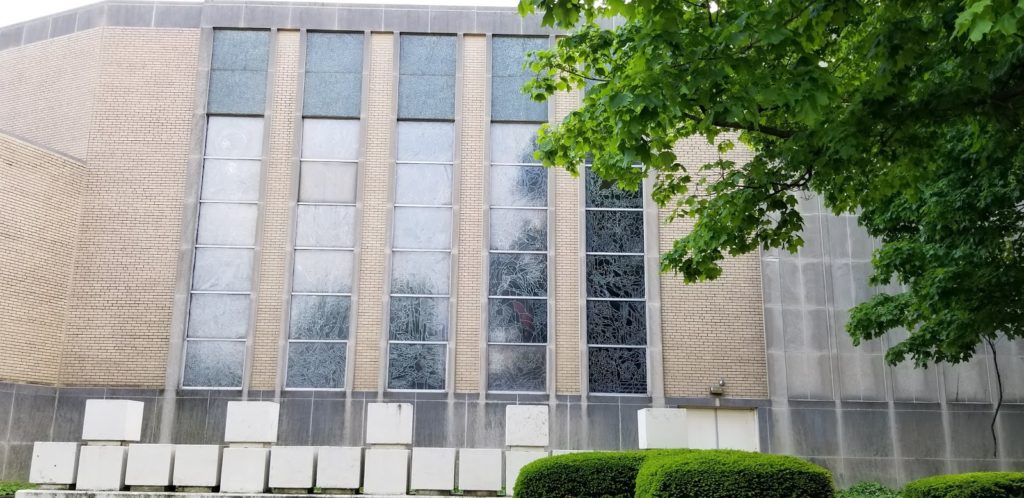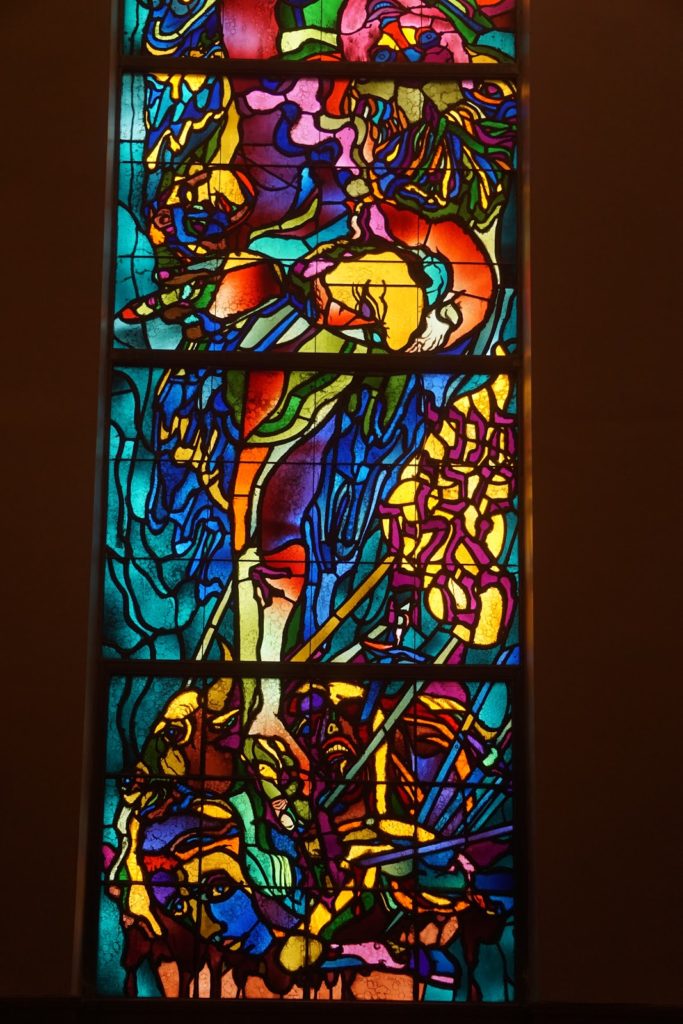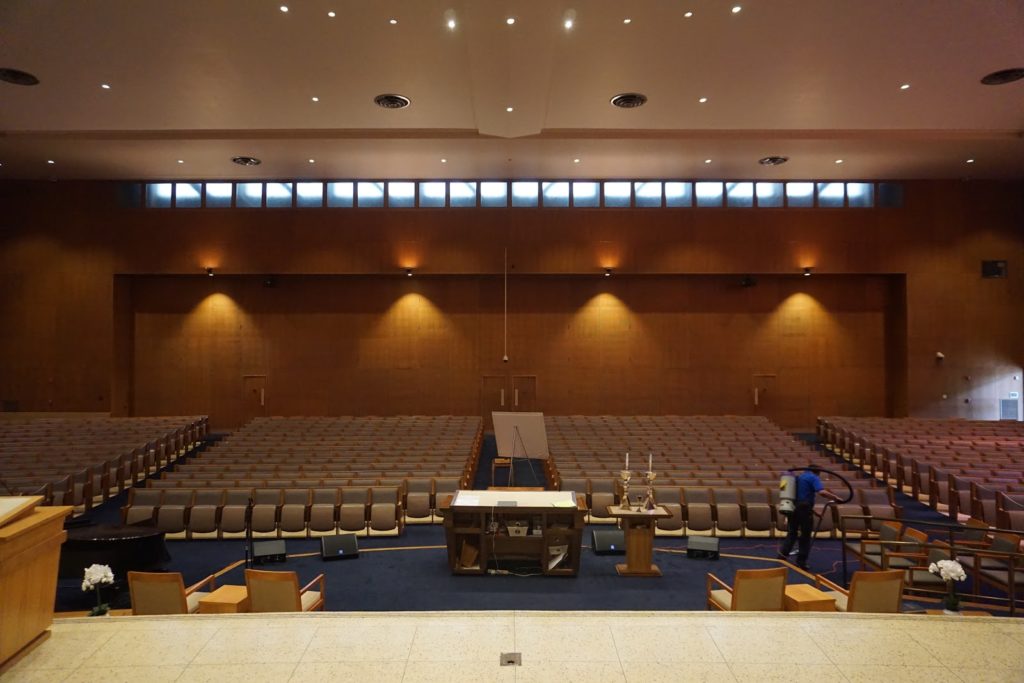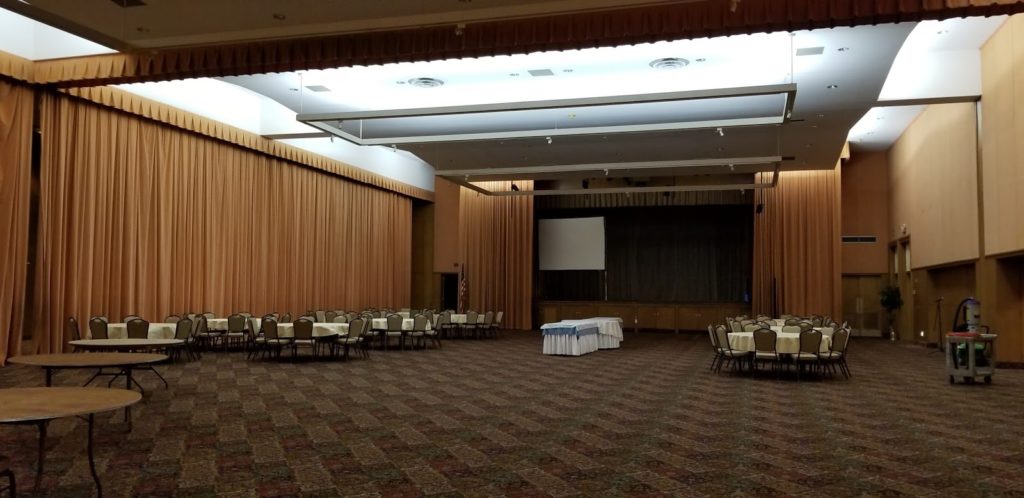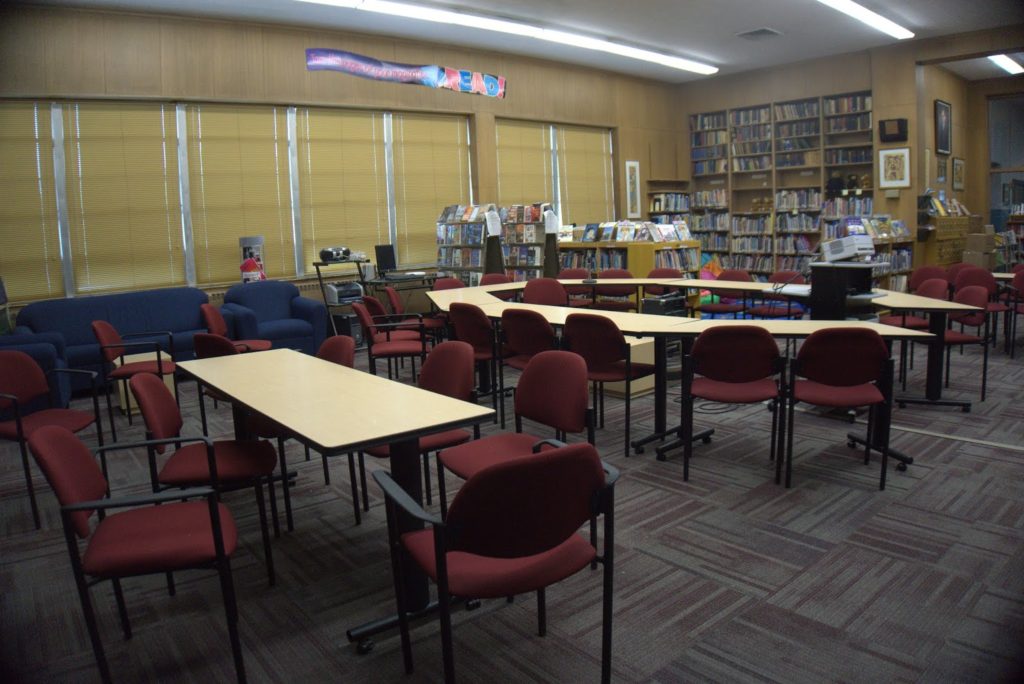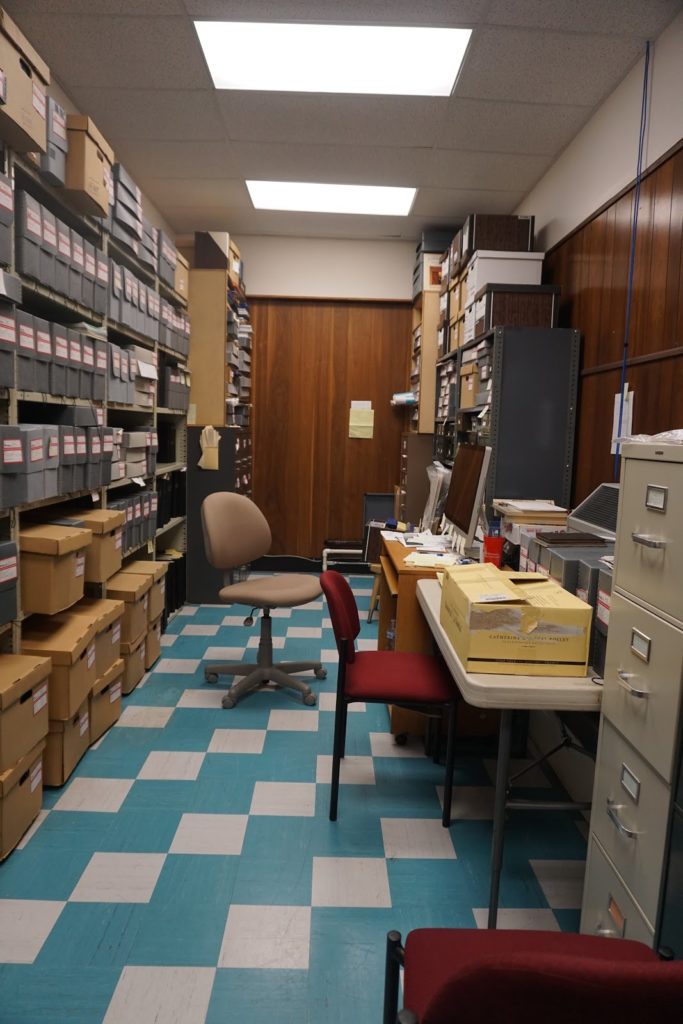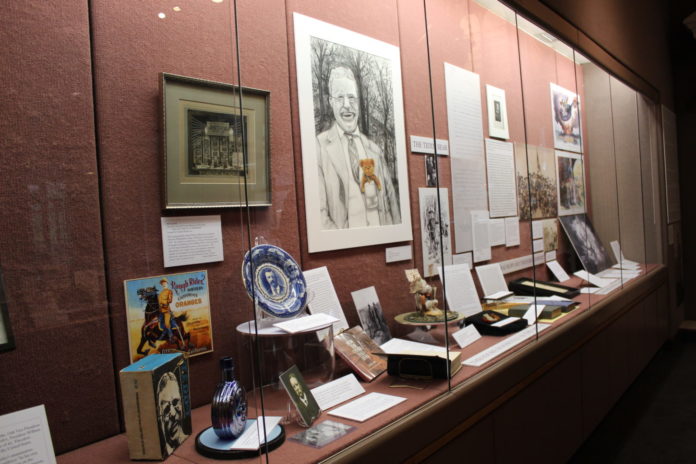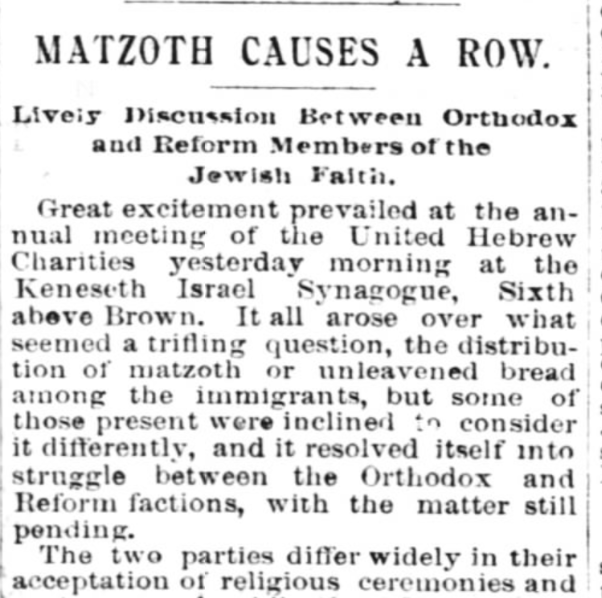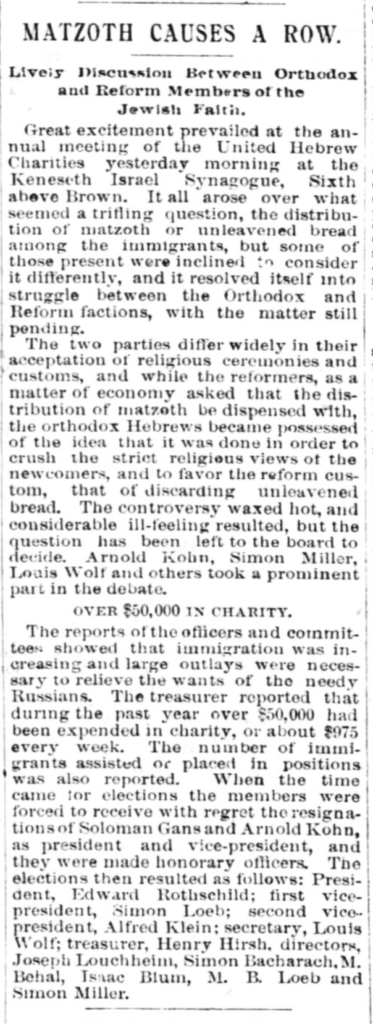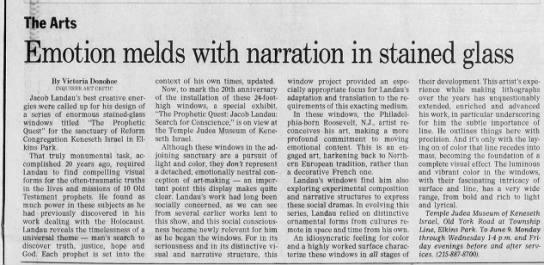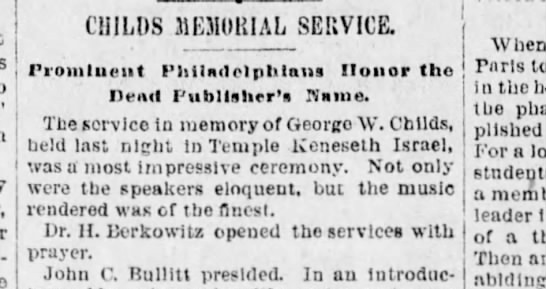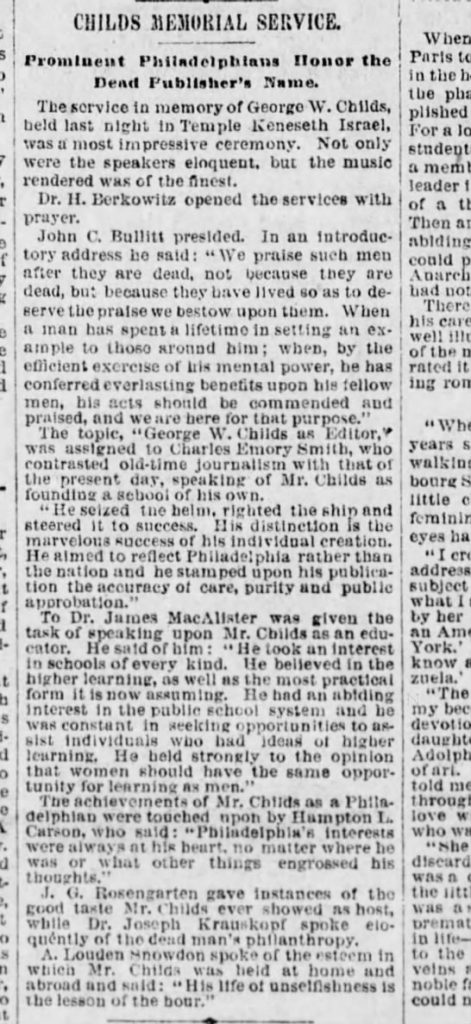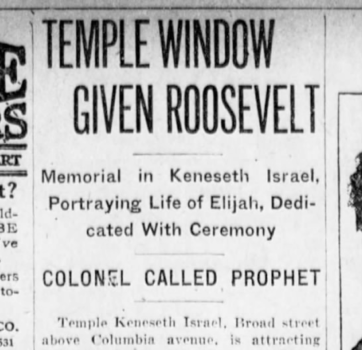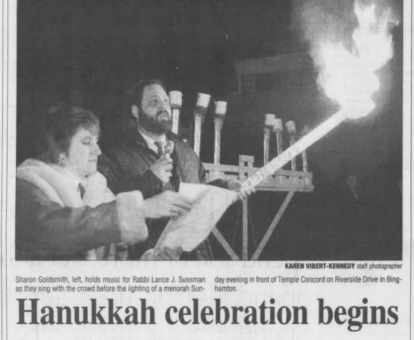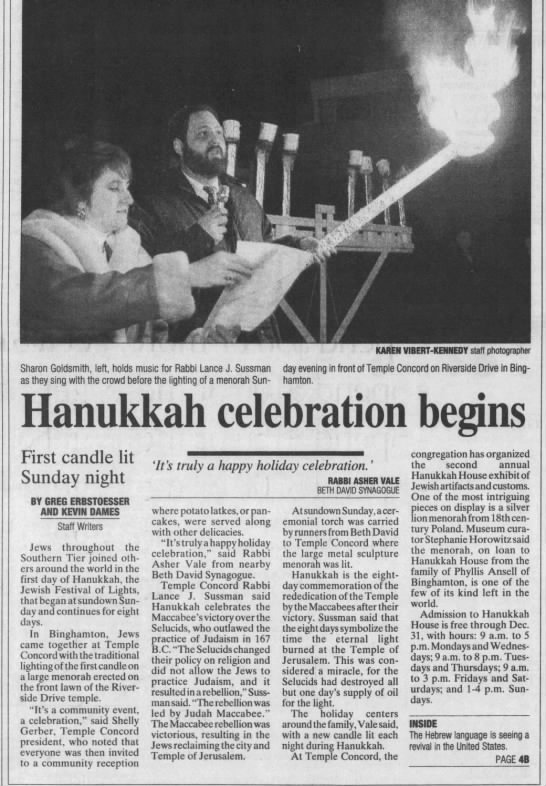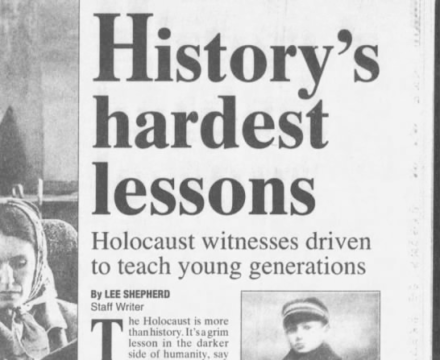Original article found at Samuel Gruber’s Jewish Art & Monuments.
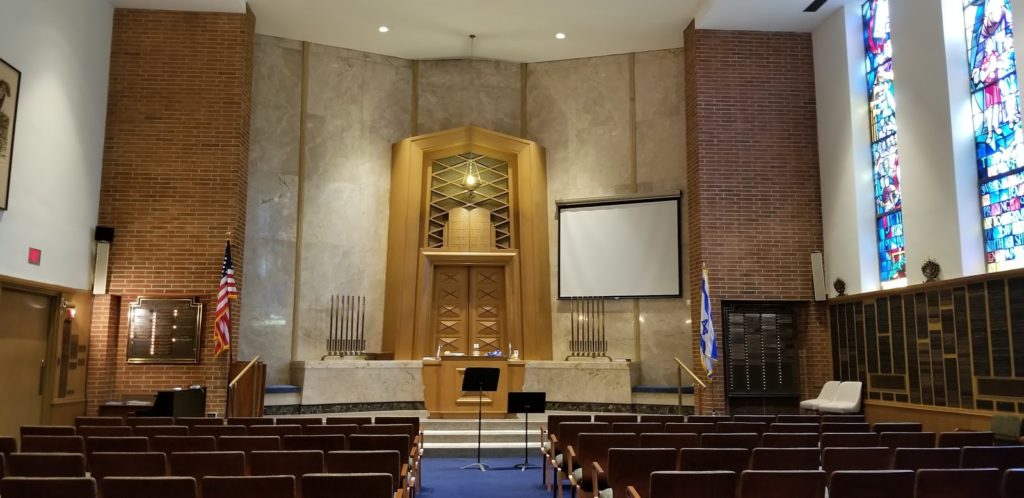
Pictured above: Elkins Park, PA. Reform Congregation Keneseth Israel. Neumann Chapel, 1959. Photo: Samuel D. Gruber 2019.
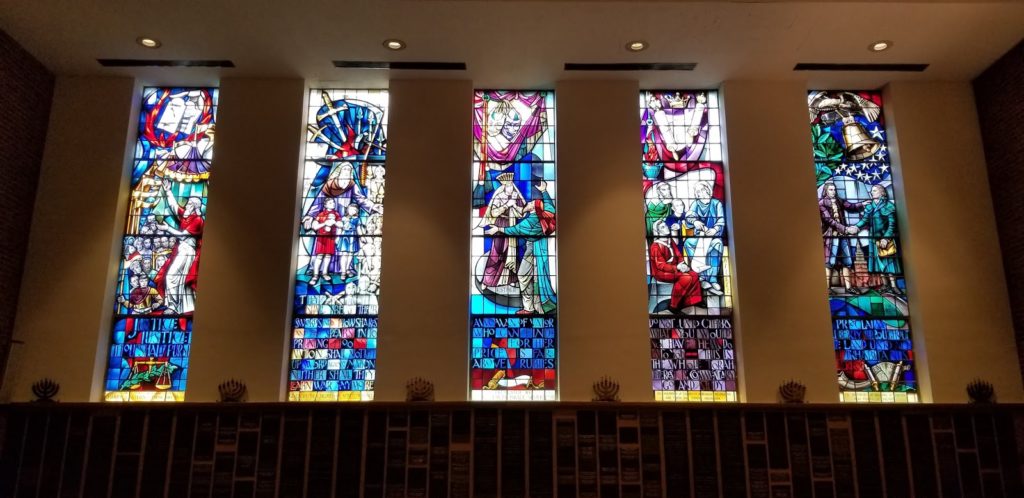
Pictured above: Elkins Park, PA. Reform Congregation Keneseth Israel. Neumann Chapel, Stained glass windows, 1960. Photo: Samuel D. Gruber 2019.
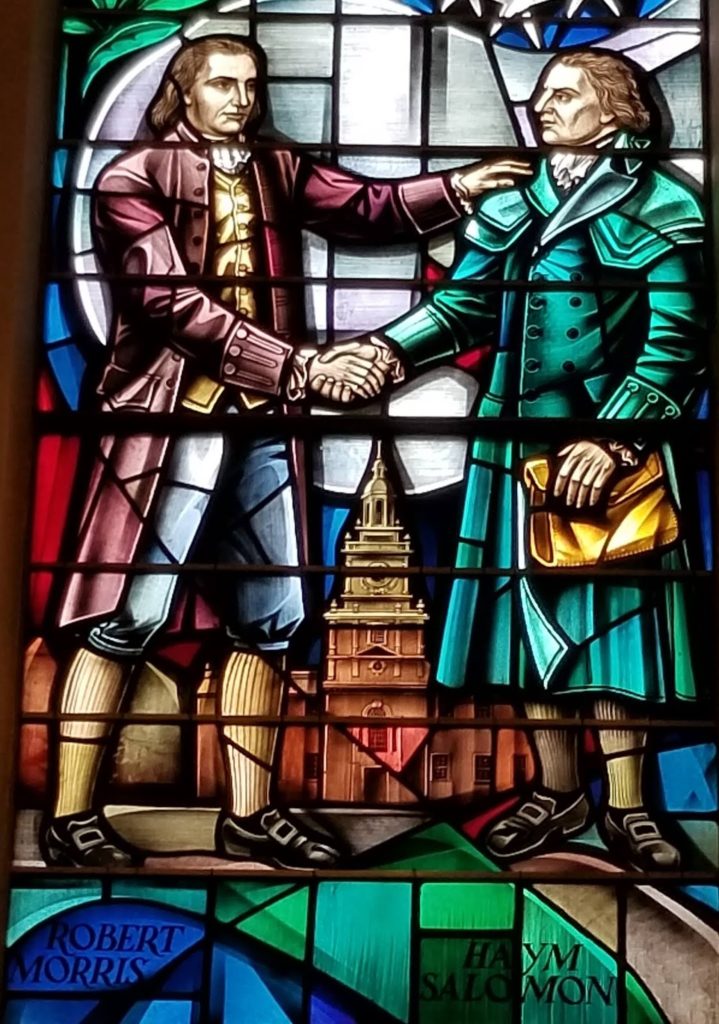
Pictured above: Elkins Park, PA. Reform Congregation Keneseth Israel. Neumann Chapel, 1960. Stained glass window detail, “Proclaim Liberty”. Photo: Samuel D. Gruber 2019.
USA: A 1960 Stained Glass Cycle at Keneseth Israel, Elkins Park, PA
The Neumann Chapel by William Haley and the Rambusch Company
by Samuel D. Gruber
Occasionally on this blog I’ve written about synagogue stained glass, and for several years The International Survey of Jewish Monuments has been documenting examples of stained glass, especially from American synagogues. Why? Because this seems to be an area of Jewish and synagogal art that has been neglected, and it can be in many ways revealing not only about changing artistic tastes, but also institutional and artistic messaging about Judaism. My goal for ISJM is to create for synagogues a collection of images and information similar to what the Census of American Stained Glass has tried for churches.
Last year I spent a few hours at Reform Congregation Keneseth Israel in Elkins Park, Pennsylvania. Today, Reform Congregation Keneseth Israel in Elkins Park, Pennsylvania, is home to two significant cycles of stained glass installed in the suburban synagogue complex opened in 1959 after the congregation moved from their 1892 building on North Broad Street. The congregation also salvaged a few of its windows from the older building. The first stained glass series was installed in 1960 in the Neumann Chapel, located off the main vestibule of the synagogue complex. The second was installed in the sanctuary. is an 1974 and a ten window cycle by Jacob Landau entitled The Prophetic Quest. The older windows are in the Temple vestibule.
I’ll write further elsewhere about the 1959 building and the Landau windows and we await a new book from Pennsylvania State University Press about those windows, too. This post, however, introduces the earlier and lesser-known cycle that is installed in the chapel. as art, they’re not really my cup of tea, but they do sum up in art a particular moment in American Jewish life and thought. And stylistically, they are probably closer to contemporary trends than at any time in the past few decades. The figure is back, especially in illustration and animation for story telling in comics and graphic novels …of which there is an ever-increasing number with Jewish content aimed at a Jewish audience.
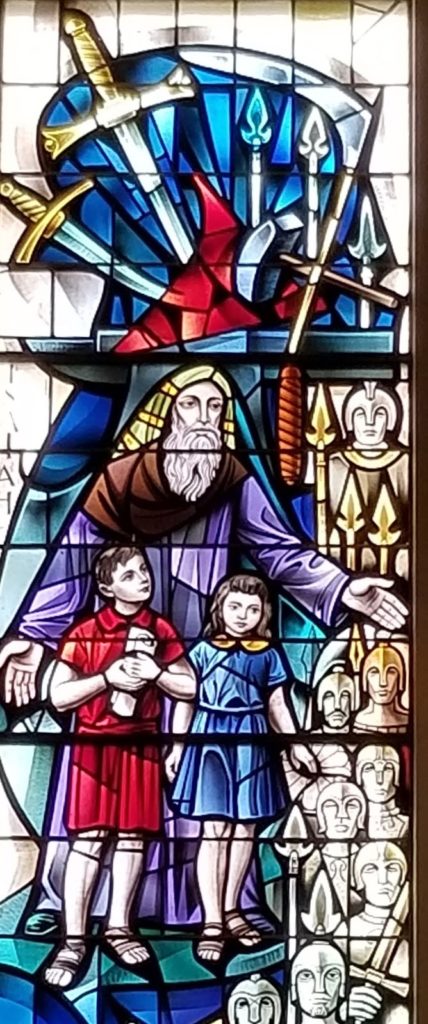
Pictured above: Elkins Park, PA. Reform Congregation Keneseth Israel. Neumann Chapel, 1960. Stained glass window detail illustrating Isaiah 2:4. Photo: Samuel D. Gruber 2019.
The earliest known use of stained glass in American synagogues is from the 1840s, and the types and techniques used have changed over the decades, as has the types of abstract patterns, and symbolic and narrative imagery used. Colored glass with painted symbols start getting used in 1870s, and single figures and narrative scenes begin to show in Reform temples in the 1890s, though usually Christian-themed windows are merely repurposed and re-titled. Additionally, but sometimes using similar iconography, were windows honoring important individuals. The Reform congregation Keneseth Israel had two such figural windows in its Renaissance style 1892 building on North Broad Street in Philadelphia. These were large memorial windows to Rabbi Isaac Mayer Wise and to President Theodore Roosevelt which were dedicated in 1909. There were also windows with Biblical scenes, one of which is on view in the vestibule of the present-day Keneseth Israel, dedicated in 1959.
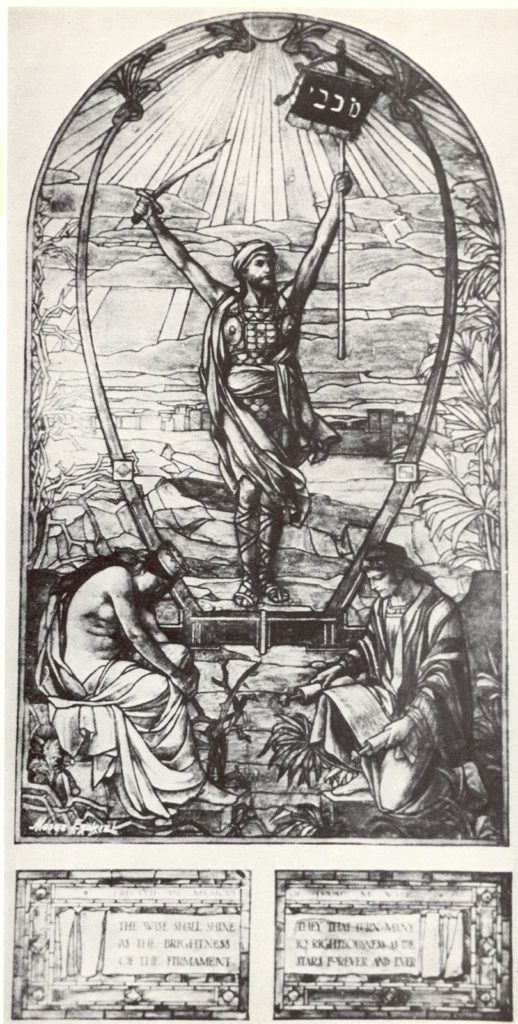
Pictured above: Former Temple Keneseth Israel, Philadelphia, Rabbi Isaac M. Wise Memorial window, Moses Jacob Ezekiel, 1909.
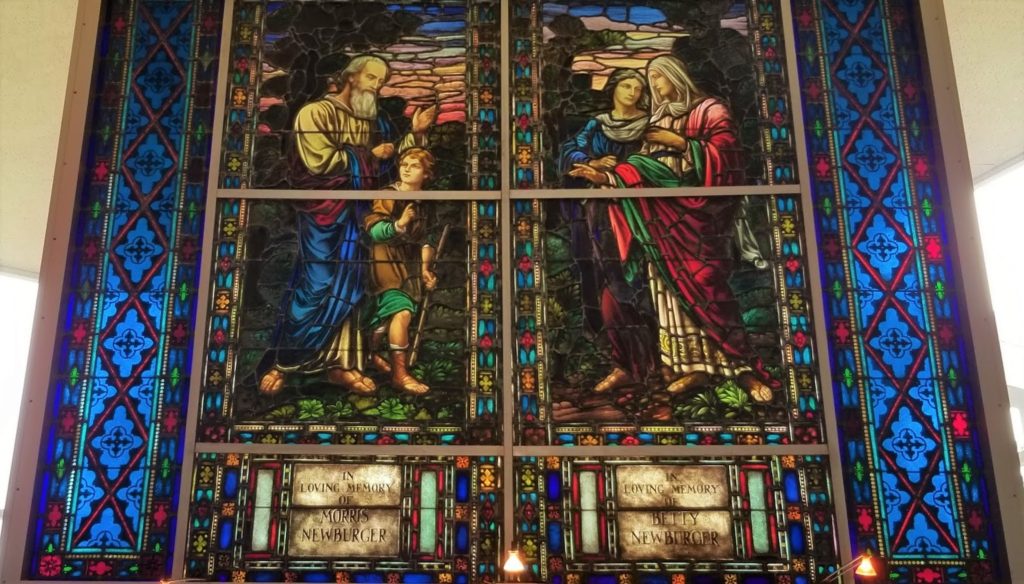
Pictured above: Former Temple Keneseth Israel, Philadelphia, Rabbi Isaac M. Wise Memorial window, Moses Jacob Ezekiel, 1909.
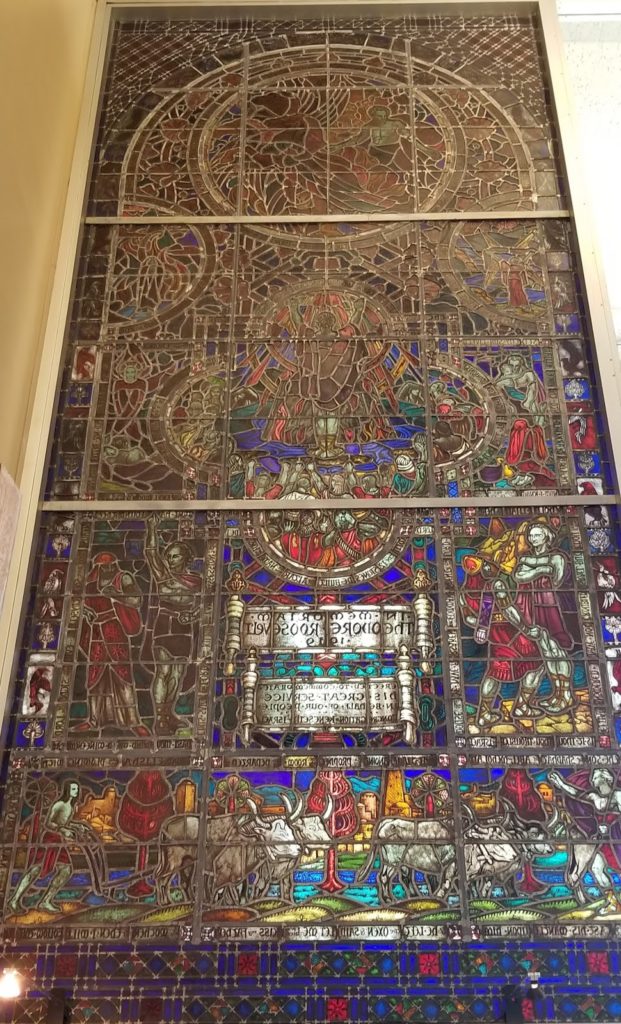
Pictured above: Elkins Park, PA. Reform Temple Keneseth Israel. Window honoring President Theodore Roosevelt from former synagogue on North Broad Street. Photo: Samuel Gruber 2019.
In the interwar period, there continued to be the use of non-representational windows, too, using patterns of colored glass, or more often, mixing these with a limited number of panels representing Jewish symbols, life cycle events and broad Biblical stories and Jewish precepts, even including Hebrew inscriptions.
As we have seen, already by 1909, and even more so in the 1920s, some Reform congregations had begun to include large windows with individual human figures – usually prophets – or narrative themes representing either Biblical events or Jewish themes. These programs were usually developed by rabbis and building committees in conjunction with the established stained glass studios from where windows were ordered.
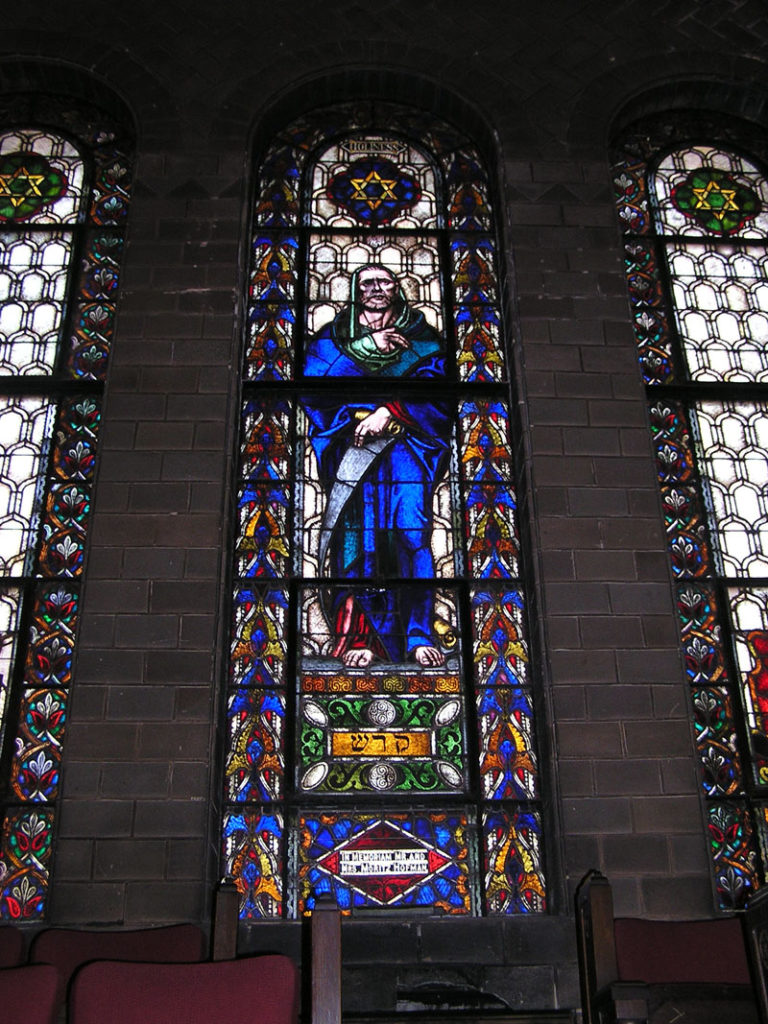
Pictured above: Chicago, IL. Temple Isaiah. Stained glass window of figure representing “Kadosh” (Holy), ca. 1924. Photo: Samuel Gruber 2004.
The post-World War II period, however, was especially a period of transition in the planning and production of synagogue stained glass. Many more themes relevant to contemporary Judaism were introduced, and patrons and artists were more confident in including individual figures, but especially narrative scenes to be used for spiritual and community messaging. This was especially true in Reform synagogues, but even Conservative and Orthodox congregations adopted more stained glass, though this tended to be more abstract, even if the themes – such as “creation” – were specific.
Some congregations reached out to leading Jewish artists to decorate their new mid-century modern synagogues with either large windows or series of windows on Jewish themes: Marc Chagall, Ben Shahn, Abraham Rattner, Adolph Gottlieb, Jacob Landau, David Holleman, William Saltzman, and others. Often these were well-known artists who were not experienced in the art of stained glass. They learned on the job and worked with individual or studio glass fabricators. Quite often, rabbis would work with the artists to develop the themes and to chose appropriate texts to be inscribed as part of the overall design.
Still other congregations engaged leading modern stained glass artists such as Robert Sowers or Jean-Jacques Duval. Most often these works are abstract. I do not know why Rabbi Bertram Korn chose the New York-based Rambusch Company to make this chapel cycle, but the rabbi apparently worked closely with Rambusch artist William “Bud” Haley on the designs. Haley and the Rambusch team were leading creators of American church stained glass in the 1950s. Haley worked for Rambusch for forty years and is responsible for many large window cycles, especially for Christian churches. A good examples of his work is the Holy Cross Catholic Church in Omaha which can be viewed here.I am not aware of any other synagogue work.
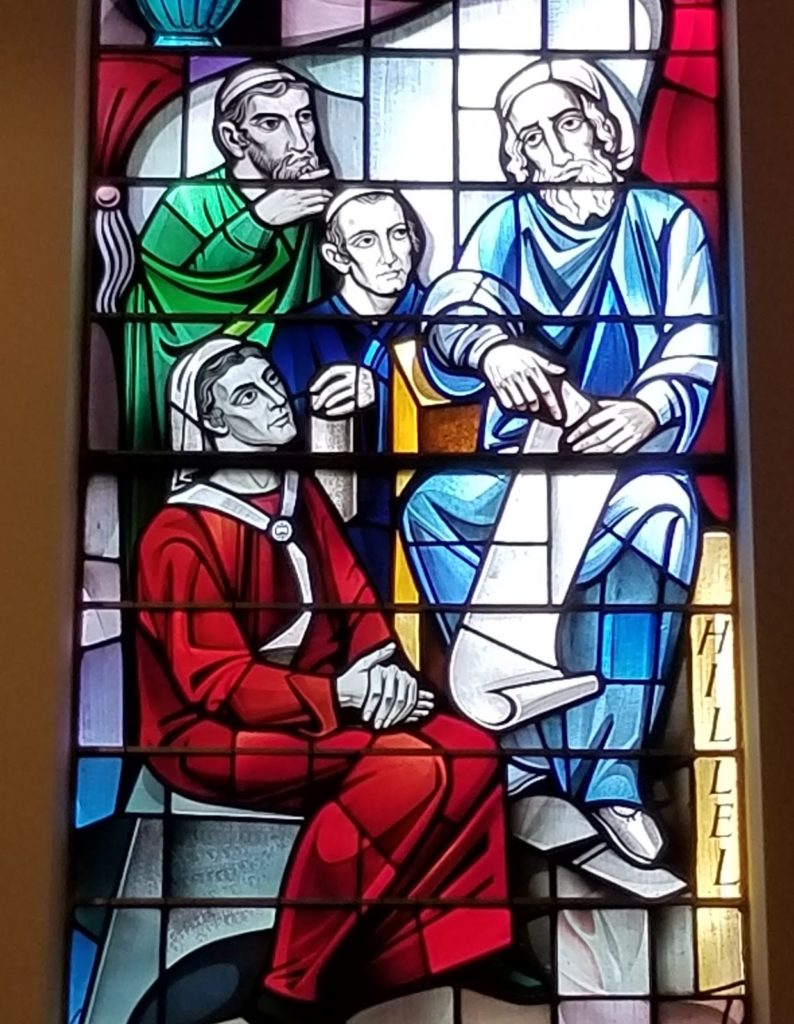
Pictured above: Elkins Park, PA. Reform Congregation Keneseth Israel. Neumann Chapel, Stained glass detail, Fourth window: “Do Unto Others…, Talmud, Shabbat 31a, 1960. Photo: Samuel D. Gruber 2019.
There are five large vertical windows all on one side of the chapel, seen in a row as a series. Korn wrote that the design and artistry should serve “the greater issue of Judaic content..This and all windows designed for the Neumann Chapel are to carry the double purpose of commemorating important historical personages and to inculcate spiritual teaching to our own generation.” For KI, Rabbi Korn chose five themes that were important within the Reform Movement: Justice, Peace, Women’s Rights, Charity, and Liberty/Americanism.
First window: Justice, Justice, Thou Shalt Pursue (Deut. 16:20)
Instead of showing prophets such as Isaiah or Micah, we see the figure of Moses giving the law to the Tribes of Israel who are represented by their tents and as a mass of people. This passage always resonates, but for Jews it might have had special significance in 1960, at the end of the McCarthy era blacklist and at the height of the Civil Rights Movement.
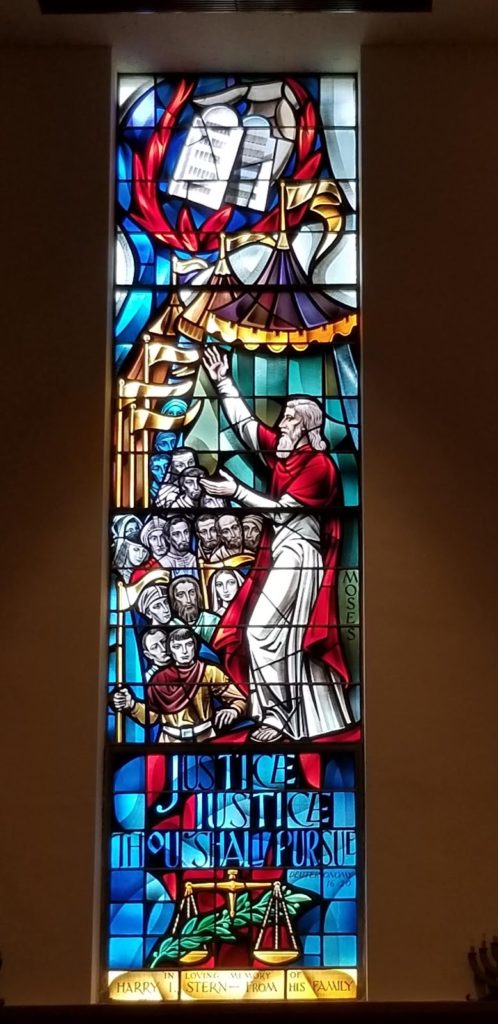
Pictured above: Elkins Park, PA. Reform Congregation Keneseth Israel. Neumann Chapel, 1960. Stained glass window detail illustrating “Justice, Justice Thou Shalt Pursue. Photo: Samuel D. Gruber 2019.
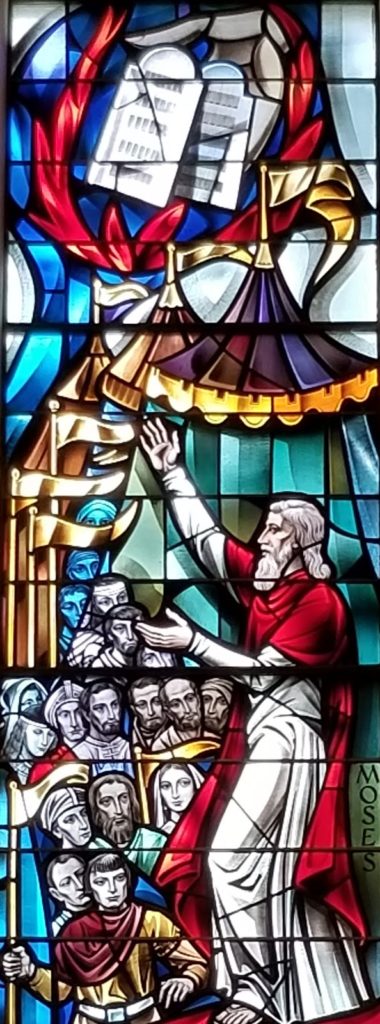
Pictured above: Elkins Park, PA. Reform Congregation Keneseth Israel. Neumann Chapel, 1960. Stained glass window detail illustrating “Justice, Justice Thou Shalt Pursue. Photo: Samuel D. Gruber 2019.
Second window: They Shall Beat Their Swords into Plowshares (Isaiah 2:4)
The second window was paid for in part by the children of the congregation so not surprisingly, two modern children, a boy and girl, are being shepherded by the prophet Isaiah, who calls for swords to be beaten into plowshares. We see a lot of soldiers, but I would doubt that these suburban Philadelphians would even know what a plowshare was – I don’t think I did was their age in Philadelphia just a few years later. But there is a lot of weaponry, and the juxtaposition of the old timer prophet and in the modern children now part of his world presents a sense of adventure, something like the children encountering Oz or Narnia (a very Christian adventure), or maybe in America in 1960, the Hardy Boys and Nancy Drew. Today Isaiah looks like Dumbledore, and the children Harry and Hermione. Or perhaps, Rabbi Korn and and bud Haley were thinking of the older windows of Keneseth Israel, like the one shown above with the beard Patriarch and a boy (Abraham and Isaac?)
Thematically there is something poignant about the sentiment. It comes just at the end of the Korean War and at the beginning of the Vietnam War. The Cuban Missile Crisis was only two years away, but Israel’s War of Independence was twelve years past, and the Suez War only four years previous. The world was scared of nuclear destruction, while more immediately gunfire in American would soon slay the president and moral leaders, and by the late the 1960s begin to take thousands of lives of citizens every year – a process that has only escalated in the years since. There continue to be more swords than plowshares, more handguns and semi-automatic rifles than shovels, hoes and rakes.
When I look at this image of the children surrounded by soldiers and swords, I also look ahead. This is not the beginning of giving children a place in Jewish art, but soon as Holocaust commemoration takes its center place in Jewish memory, the memory of children will be push and promoted. Already in 1960 Anne Frank has become the poster child for the Holocaust. The Broadway production of the Diary of Anne Frank ran from 1955 to 1957, and then traveled the country. The film version came out in 1959, just as these windows were being planned.
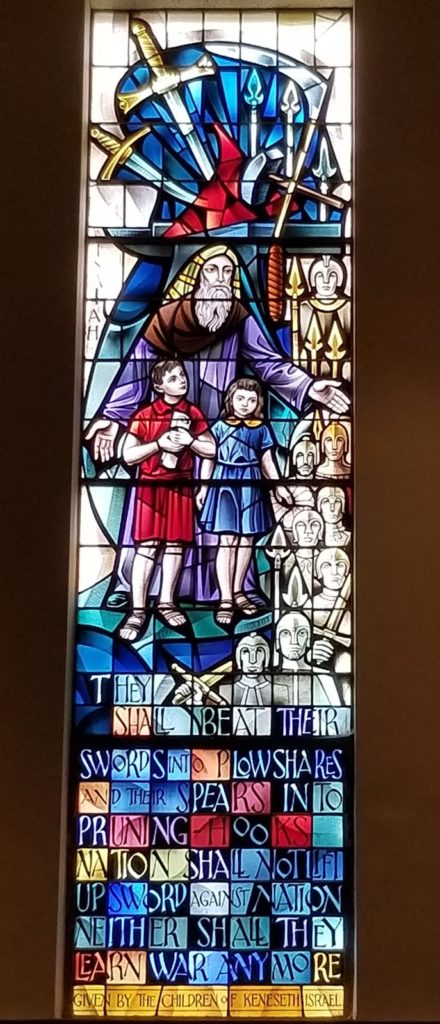
Pictured above: Elkins Park, PA. Reform Congregation Keneseth Israel. Neumann Chapel, 1960. Stained glass window detail illustrating Isaiah 2:4. Photo: Samuel D. Gruber 2019.
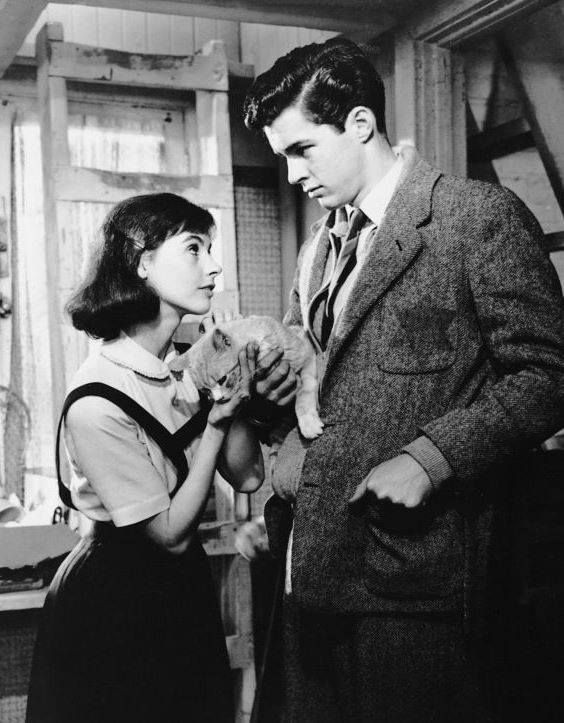
Pictured above: Richard Beymer and Millie Perkins in The Diary of Anne Frank (1959).
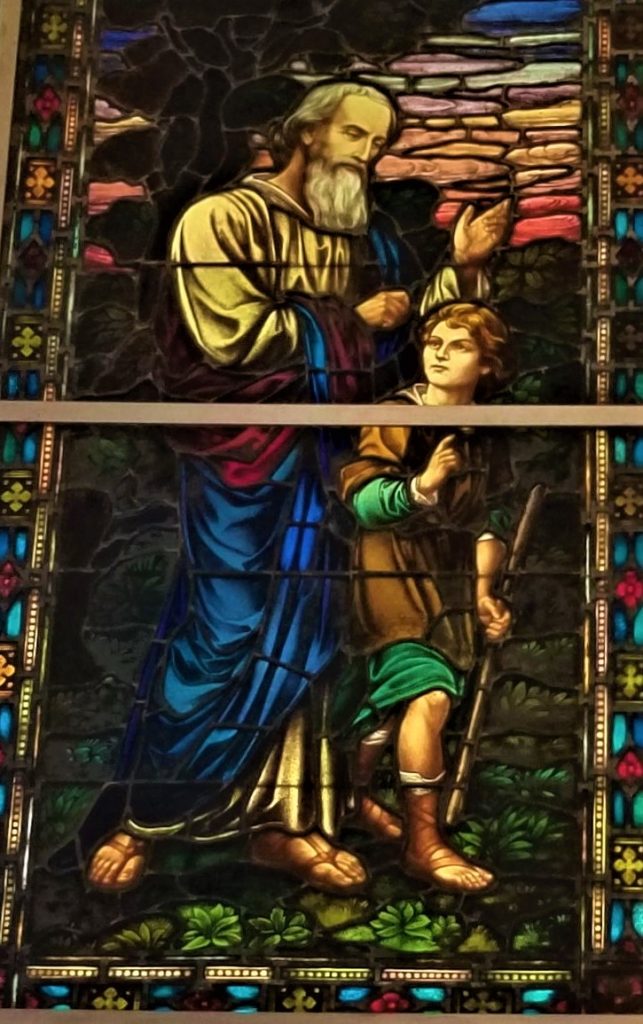
Pictured above: Elkins Park, PA. Reform Temple Keneseth Israel. Window from former synagogue on North Broad Street. Subject might be Abraham and Isaac. Photo: Samuel Gruber 2019
Third window: Queen Esther / A Woman of Valor (Proverbs 3)
This window celebrates Queen Esther as a woman and as a hero – a Woman of Valor in multiple ways. The women’s movement was only just getting started in 1960, but many of the soon-to-be leaders were Jewish women like Betty Friedan who applied Jewish teaching about women outside the Jewish home and the synagogue into society. She published the Feminine Mystique in 1963. Already, most American synagogues knew they could not survive without the extensive – usually unpaid – assistance of women. The Temple Sisterhood routinely helped organize and often fund all sorts of synagogue events, and at KI, they were the ones who sponsored this window.
Interestingly, Esther the Queen is placed on an actual pedestal in this image (like Grace Kelly’s Tracy Lord in the hit 1956 musical High Society), with Mordecai looking up to her. This American-Jewish version of the heroic woman still has a long way to go to bring her off the pedestal into the world, as Zionist art had been attempting, and as some representation of Holocaust heroes had achieved.
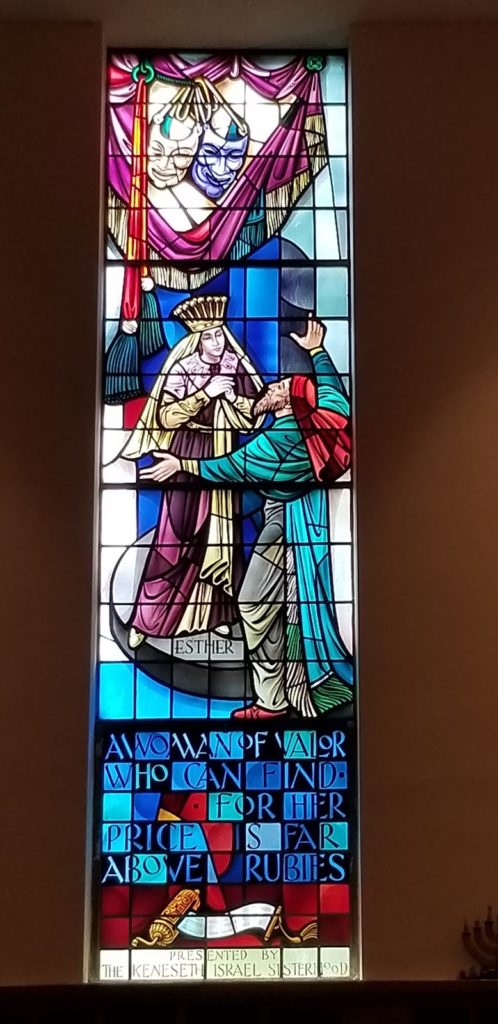
Pictured above: Elkins Park, PA. Reform Congregation Keneseth Israel. Neumann Chapel, 1960. Stained glass window quoting Proverbs 31m but illustrating the Book of Esther. Photo: Samuel D. Gruber 2019.
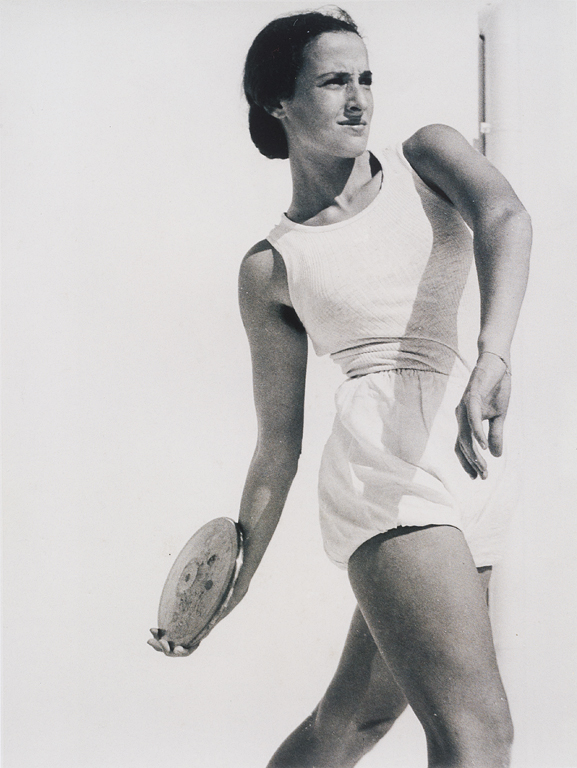
Pictured above: Lisolette Girschebina, Photo from Sports in Israel: Discus Thrower, 1937. Collection of Israel Museum

Pictured above: Warsaw, Poland. Warsaw Uprising Monument. Nathan Rapoport, sculptor. dedicated 1948. Photo: Samuel D. Gruber 2008.
Fourth window: Do Unto Others… (Talmud, Shabbat 31a)
This window features Rabbi Hillel, and celebrates that the performance of good deeds-helping and supporting others-is at the heart of Judaism. Though a mild scene of a teacher or Torah and his students, the image and the message are essential to the optimism and outreach of Liberal Judaism as it developed in post-World War II America. This a time when Judaism, because in large part of sacrifices during the war (and the Holocaust), was elevated to an equal status with Protestant Christianity and Catholicism as one of the three religious pillars of America. The choice of this passage from the Talmud is intentional – as it is the same oft-quoted New Testament passage from Matthew (7:12), thus indicating that at their cores, Judaism and Christianity are united, not opposed.
This is an very liberal American idea. On April 1, 1961, just a year after the completion of these windows, the artist Norman Rockwell made this point on the cover of the Saturday Evening Post with one of his most famous illustrations of exactly this passage. It is important to remember, too, that this cover was published just shortly after the inauguration of John F. Kennedy, the country’s first Roman Catholic president. Kennedy himself, echoed this passage in his inaugural address when he said famously, “And so, my fellow Americans: ask not what your country can do for you – ask what you can do for your country.”
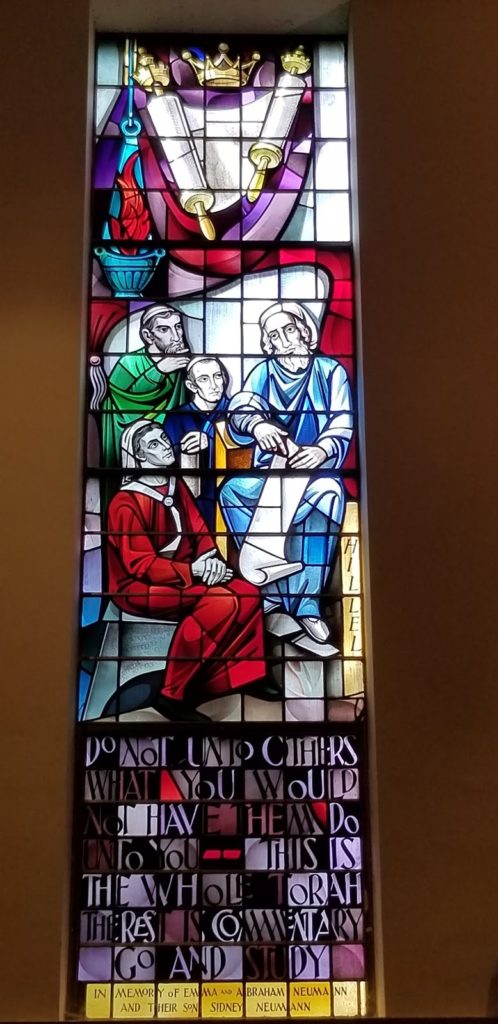
Pictured above: Elkins Park, PA. Reform Congregation Keneseth Israel. Neumann Chapel, 1960. Stained glass window illustrating Rabbi Hillel with the admonition “Do Unto Others …”. Photo: Samuel D. Gruber 2019.
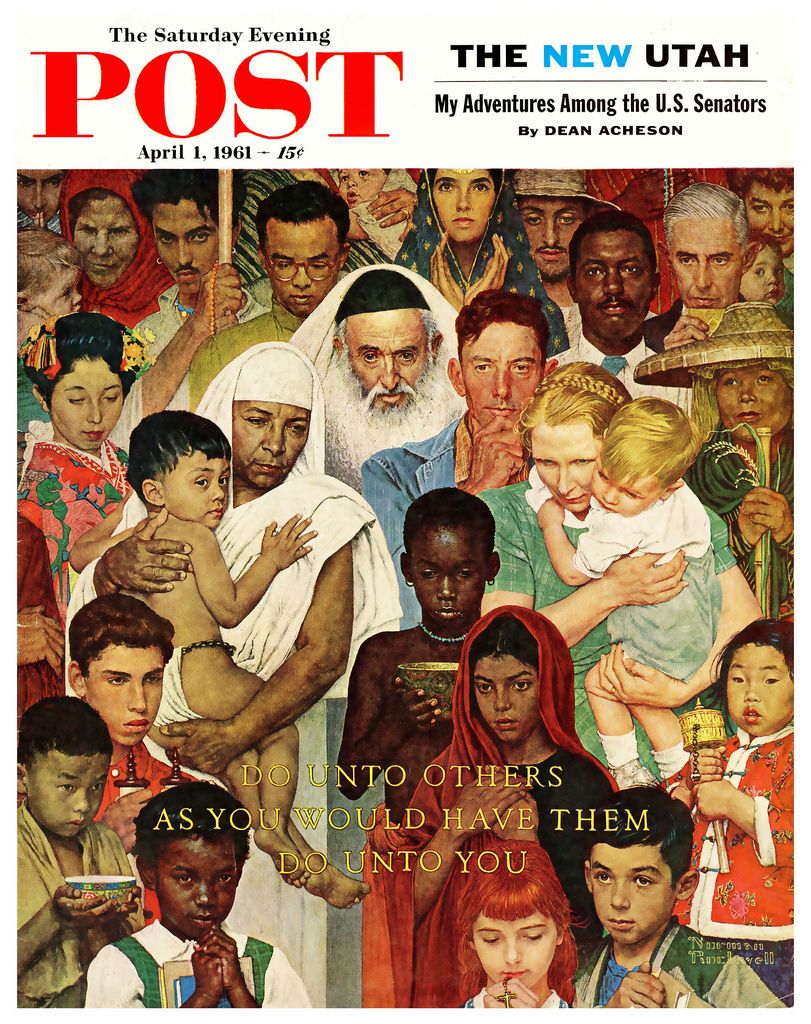
Pictured above: Norman Rockwell. “Do unto Others …” Saturday Evening Post cover April 1, 1961.
Fifth Window: Proclaim Liberty (Leviticus 25:10)
This window celebrates the Jewish contribution to the Revolutionary War, and introduces us to Haym Salomon who is shown shaking hands with Robert Morris, and taking his place as a financier of the Revolution.Salomon was made famous (again) through the erection of a bronze statue in Chicago in 1941 and by the Howard Fast historical novel Haym Salomon, Son of Liberty of the same year. Rabbi Korn was an historian of American Jewish history, and Salomon was a Philadelphia hero, so it not surprising to find him on these windows as a More “modern” Jew.
Howard Fast was black-listed for his active membership in the Communist Party, but in 1958 the reissue by Crown Publishers Spartacus, Fast’s most famous novel, effectively ended his blacklisting within the American publishing industry. The timing might be coincidence, or perhaps this window, is also a celebration of Freedom of the press and political liberty in contemporary times. Salomon would be celebrated again in 1975 on an United States commemorative stamp, and would figure as the “token” Jews in any representation of Founding Fathers and Heroes of the American Revolution.
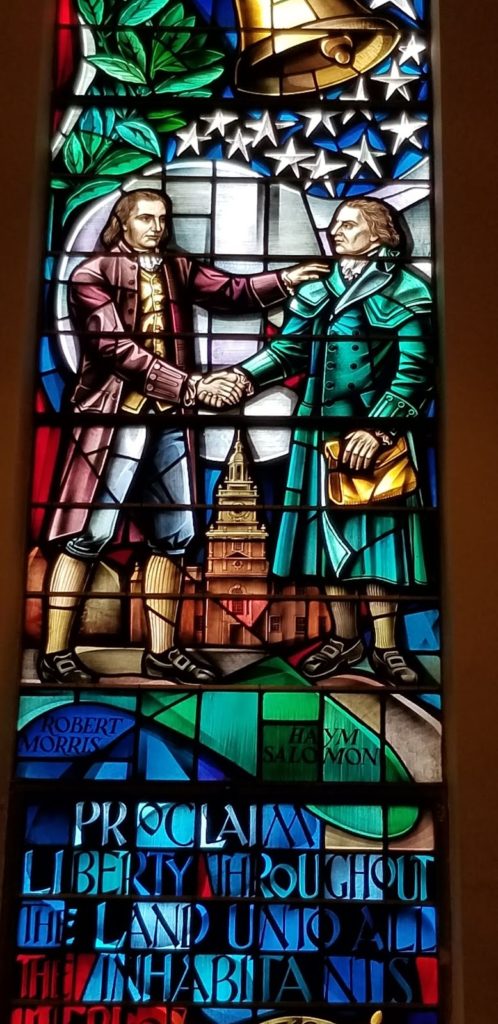
Pictured above: Elkins Park, PA. Reform Congregation Keneseth Israel. Neumann Chapel, 1960. Stained glass window detail, “Proclaim Liberty”. Photo: Samuel D. Gruber 2019
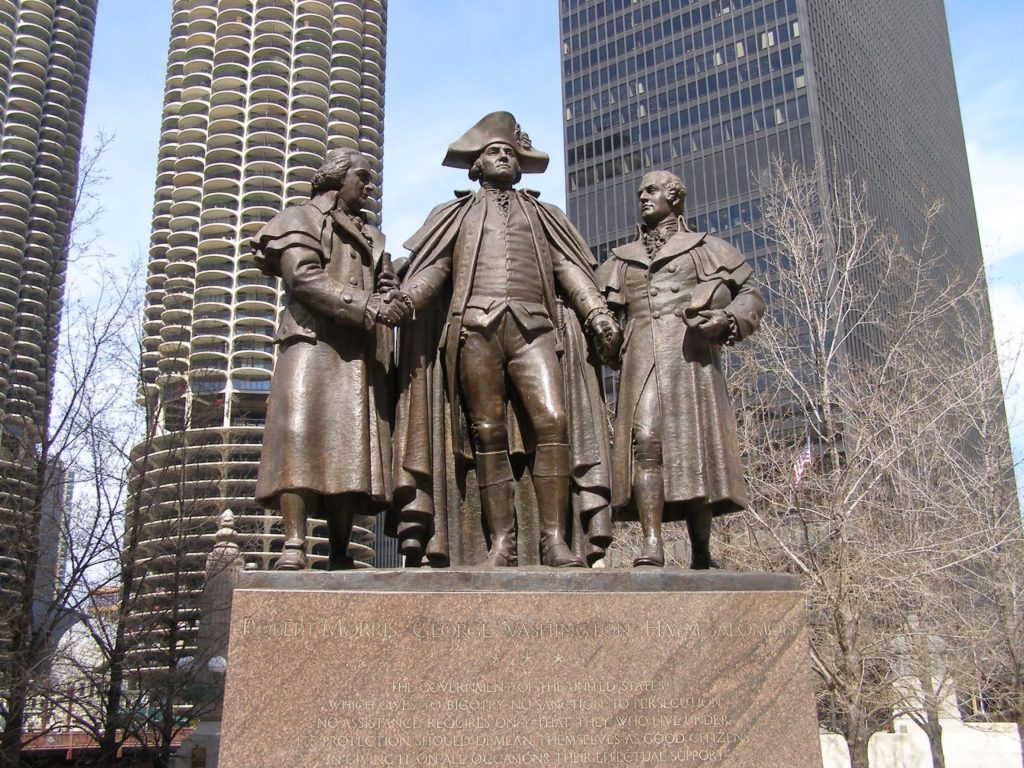
Pictured above: Chicago, Illinois. Monument to Washington, Robert Morris, and Haym Solomon, 1941.. Photo: Samuel D. Gruber, 2008

Pictured above: Elkins Park, PA. Reform Congregation Keneseth Israel. Neumann Chapel, 1960. Stained glass Window detail, “Proclaim Liberty”. Photo: Samuel D. Gruber 2019.
Significantly, there are no windows referring directly the Holocaust, the still-new State of Israel, or the nascent Civil Rights Movement, all issues which would engage the Reform Movement in the 1960s – but also all of which could stir controversy within the congregation.Still, the themes chosen could reflect those “silent” themes, too. The first window about Justice could refer to the Civil Right Movement; the second window about Peace could refer to hopes for the state of Israel; the third window about Esther could refer the Holocaust since the enemy Haman was seen in the post-warrior period as an earlier Hitler. The fourth window, “Do Unto Others,” was certainly meant to encourage charity and tolerance; and the fifth window to both encourage patriotism but to emphasize that American Jews were and always had been, patriotic.
I want to thank Rabbi Lance Sussman of Reform Congregation Keneseth Israel for his hospitality.

